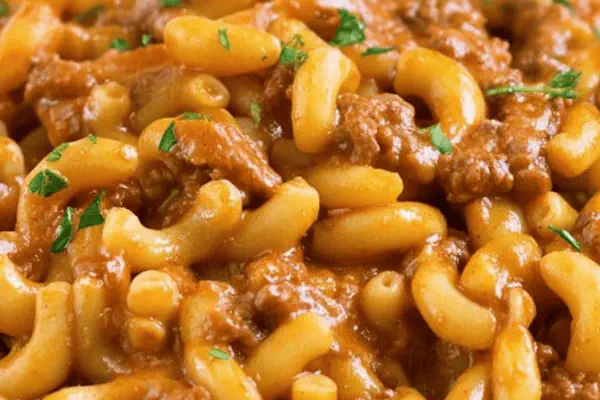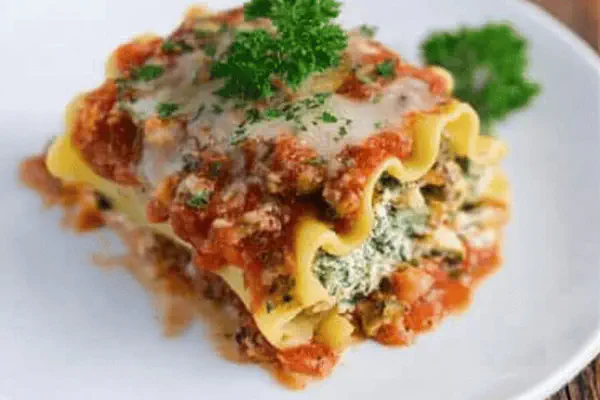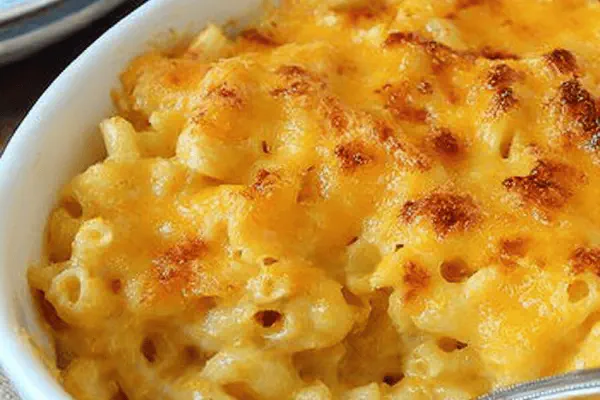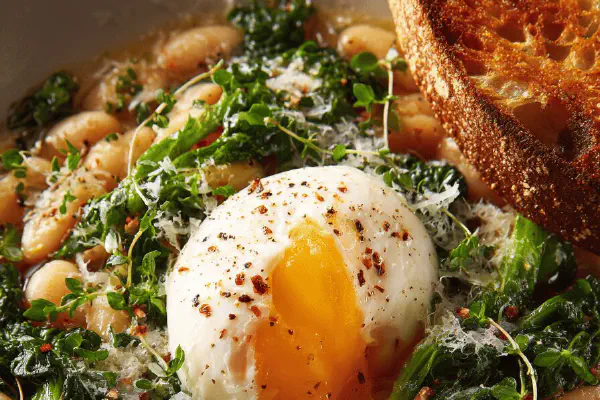Tagliatelle with Pork Shanks
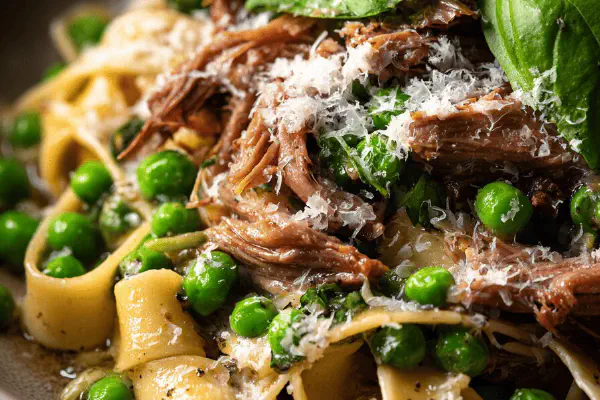
E
By Emma
Certified Culinary Professional
•
Recipe tested & approved
Pasta dish made with slow-cooked pork shank meat, green peas, Dijon mustard, white wine, fresh basil, and Parmigiano Reggiano. Uses tagliatelle cooked al dente, finished in a rich broth from the cooking liquid. Butter adds silkiness; herbs and cheese add freshness and umami. A rustic main course combining tender pork with vibrant peas and fragrant basil.
Prep:
25 min
Cook:
15 min
Total:
40 min
Servings:
4 servings
#pasta
#pork
#weeknight meals
#French cuisine
#comfort food
Pork shanks. Slow-cooked until tender, shredded. Tagliatelle—the long flat pasta—holds the sauce, absorbs flavor. Green peas for a pop. White wine lifts the broth, a splash of mustard gives slight tang. Fresh basil chopped in at the end, bright and herbal. Parmigiano adds salty richness, melting softly. Butter rounds everything, silkening the sauce. Quick-ish dinner, but feels composed. The shank cooking liquid is star. Pour it back in, instead of water or broth. The pasta swells with that deep pork taste. No heavy cream, just pure essence, rustic but refined. A French-inspired pasta with a touch of countrified soul. The pearls of pea and aromatic herbs are glimpses of freshness amid warm comfort. The pork—not a shred ignored. With each forkful, textures play: tender meat, firm pasta, bursts of green. Salt and pepper essential; seasoning is key here. Simple, but layered. No fuss sauces. Pieces come together in the pot, then finish with butter and cheese, no extra dishes. Can see it on a weeknight table, or served to guests when time’s tight but you want substance. No nuts, dairy’s just from cheese and butter, and eggs not in pasta, so approachable. Serve with crisp white wine or dry rosé to balance richness. A rustic plate that feels fancied but not showy. Flavor more by letting quality ingredients speak, and a bit of technique—slow-cooked pork, a little simmer to bring the components together. Bright green peas against warm tones. Rustic elegance on a plate. Meals like this are about savoring textures, layering flavors, letting simple ingredients show they can go far.
Ingredients
- 450 g tagliatelle
- 1 small onion, finely chopped
- 1 clove garlic, minced
- 20 ml olive oil
- 80 ml dry white wine
- 20 ml whole grain mustard
- 200 ml pork shank cooking liquid
- 300 ml frozen green peas
- 400 ml shredded pork shank meat
- 40 ml unsalted butter
- 100 ml fresh chopped basil
- 100 ml grated Parmigiano Reggiano
- Salt
- Black pepper
About the ingredients
Tagliatelle should be good quality, preferably fresh or dry semolina pasta with a firm bite. The pork shank meat ideally cooked slowly until it pulls apart effortlessly; reserve the cooking liquid to infuse the pasta with pork flavor. Frozen peas work well when fresh ones aren’t in season—just toss them in mostly frozen to maintain texture and vibrant color. Whole grain mustard adds a grainy, tangy note, replace Dijon if desired, but won’t have the same smooth pungency. Olive oil for sautéing, unsalted butter for finishing to control salt levels. Fresh basil chopped roughly at the end keeps freshness intact. Parmigiano Reggiano grated finely for better melting. The quantities here adjust the balance, reducing peas slightly and increasing pork to make it meatier. The cooking liquid volume is reduced a bit to ensure the broth doesn’t overwhelm the pasta but perfectly coats each strand.
Method
- Bring large pot of salted water to boil. Cook tagliatelle just shy of al dente. Drain, toss with drizzle of olive oil. Set aside.
- Heat oil in same pot over medium heat. Add onion and garlic; cook 4 minutes until soft and fragrant.
- Stir in white wine, mustard, and pork cooking liquid. Bring to rolling boil.
- Add peas. Cook 3 minutes. Return tagliatelle to pot along with shredded pork. Simmer, stirring, until pasta soaks up most broth, about 5 minutes.
- Remove from heat. Stir in butter, basil, and Parmigiano. Adjust salt and pepper. Serve immediately.
Cooking tips
Cook tags just under al dente because they will continue cooking in sauce. Toss pasta with oil immediately to prevent sticking. Reheat in the cooking pot to save washing up. Sauté onion and garlic gently but sufficiently for sweetness and aroma without browning. Deglaze with wine to lift fond, then add mustard and cooking liquid for depth. Peas are added early in this version for a slightly softer bite. Simmering pasta and meat with broth allows starch to thicken sauce, coating noodles nicely. Finish off heat to preserve basil color and freshness. Stir in butter and cheese off heat to add richness and silkiness without breaking the sauce. Season carefully to avoid overly salty, taste before serving. Serve straight from pot or warm serving dish. Timing adjusted: pasta time increased by 2 minutes (tags take longer), onion sautée slightly longer (4 instead of 3 min), peas cook 3 min instead of 2, final pasta simmer 5 instead of 4 to balance thicker broth. All steps kept efficient but building layers of flavor.
Chef's notes
- 💡 Use good quality tagliatelle. Fresh or dry semolina works great. Cook just under al dente. Holds sauce well. Prevents mushiness. Toss with oil after draining. Keeps from sticking. Easy prep.
- 💡 Onion and garlic must be sautéed gently. Sweetness is key. Don’t let them brown too much. Break them down nicely. A bit of patience pays off. The aroma builds flavor. Important step.
- 💡 When adding peas, toss in frozen. They hold texture better. Slightly softer bite is okay. But not too much cooking. Timing affects color too. Fresh peas are great but not always available. Adjust as needed.
- 💡 Simmering tagliatelle with the broth is crucial. Starch from pasta thickens sauce. Coats every strand in flavor. Keep an eye on it. Can absorb too much. Adjust cooking time if necessary.
- 💡 Finish the dish with butter and cheese off heat. Richness without breaking the sauce. Helps preserve basil's color. Fresh flavors pop. A little salt and pepper important. Taste it before serving.
Common questions
How to reheat leftovers?
Use stovetop. Add a splash of broth. Heat slowly. Prevent drying out. Stir to mix well. Microwave works too but not great.
What if I don’t have pork shank?
Substitute with pulled pork. Or use chicken thigh meat. Beef shank could work. Cook times vary. Adjust as needed.
Can I make this ahead?
Yes, prepare pasta separately. Store pork and sauce. Combine before serving. Avoid mushy pasta. Keep flavors fresh.
How to store leftovers?
Cool quickly, store in airtight containers. Refrigerate up to three days. Freezing is okay but texture changes. Just reheat carefully.
